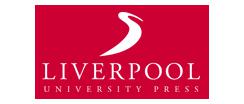- View more resources from this publisher
 Nuffield Foundation
Nuffield Foundation - View more resources from this publisher
 Liverpool University Press
Liverpool University Press
SPACE Project Research Report: Light
The Science Processes and Concepts Exploration (SPACE) project research report on Light was published in 1990 by Liverpool University Press. The SPACE research was conducted at two centres: at the University of Liverpool and King’s College, London, with Wynne Harlen and Paul Black as joint directors. Each centre took responsibility for research in particular concepts and for producing the report of the work. In the case of Light, one of the first reports to be published, the research was conducted from King’s and the authors were Jonathan Osborne, Paul Black, Maureen Smith and John Meadows.
The research took place between April 1987 and March 1988. To guide the research on the students' understanding of light, a list of related concepts was compiled. These ideas included, for example: that light travels; light normally travels in straight lines and can be represented by lines; many objects reflect or re-emit light as well as mirrors; vision occurs because light enters the eye from the object. In addition to exploring the extent to which students develop such ideas from their experiences, the research aimed to address questions about: How disparate are the ideas about light held by many students? What development is observable in students across the age range? What is the effect of intervention on the development of students' ideas about light?
In the first phase of the research activities were devised to provide opportunity to explore students' ideas about light and its behaviour. Primary school teachers taking part in the project involved their students in these activities prior to the phase in which their students' ideas were elicited using a range of techniques including individual interviews by the researchers. The next phase was intervention in which four main strategies were used to enable students to develop their ideas. This intervention was followed by further interviews so that pre- and post-intervention ideas could be compared.
The elicitation activities were designed to focus and orientate students' thinking about specific phenomena related to light. Students were then asked to draw and write answers to specific questions about the phenomena. The report provides a large number of examples of students' ideas. As well as the qualitative data, the results were analysed by frequency of response using network analysis for specific ideas. Also reported are the statistical significance of changes in ideas for lower junior (age 7-9) and upper junior students (age 9-11). Appendices provide full details of the activities, interview schedules, materials used in the activities and the classroom intervention strategies.
Contents
1. Introduction
2. Previous research
3. Methodology
4. Pre-intervention elicitation work
5. Children’s ideas
6. The intervention phase
7. The effect of the intervention
8. Changes in children’s ideas
9. Summary
Appendices A1 – A 12
Show health and safety information
Please be aware that resources have been published on the website in the form that they were originally supplied. This means that procedures reflect general practice and standards applicable at the time resources were produced and cannot be assumed to be acceptable today. Website users are fully responsible for ensuring that any activity, including practical work, which they carry out is in accordance with current regulations related to health and safety and that an appropriate risk assessment has been carried out.
Downloads
-
Light 6.81 MB




